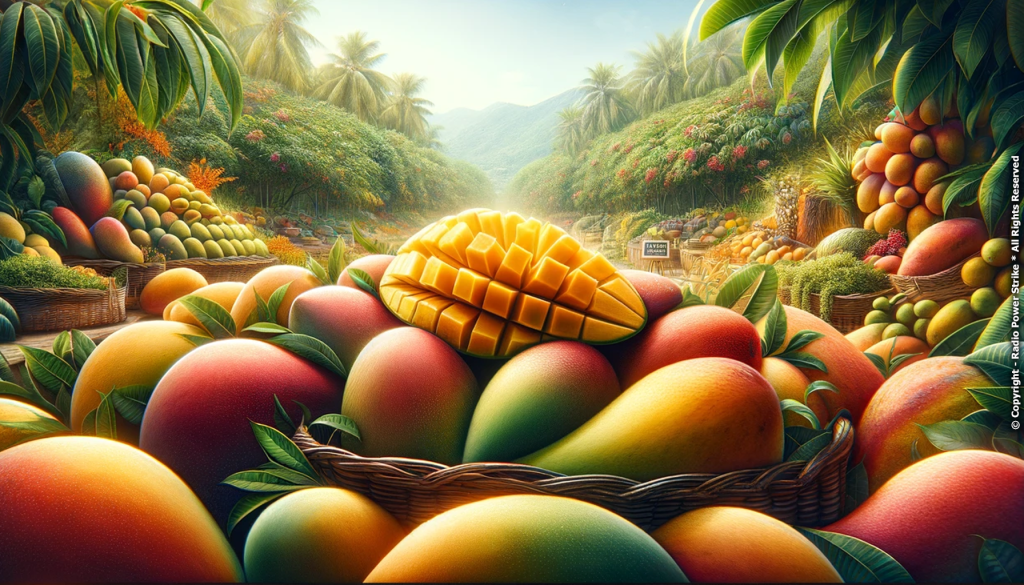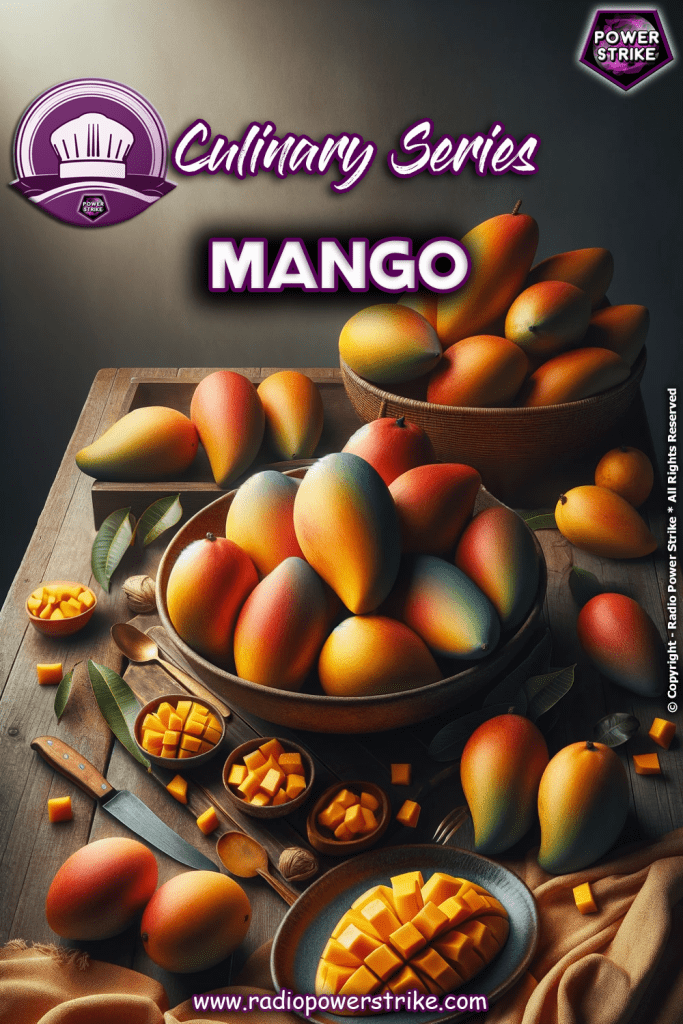
Mangoes, often referred to as the “king of fruits,” have been a culinary staple in various cultures for over 4,000 years. With their sweet and tangy flavor, coupled with a creamy texture, they are not only a delight to the palate but also packed with a myriad of health benefits. This article delves into the fascinating journey of mangoes, from their ancient origins to their modern-day global popularity.

Origin
Mangoes are believed to have originated in South Asia, with India being the largest producer and consumer. Historical records and ancient scriptures, including the Vedas, mention the cultivation and consumption of mangoes for over 4,000 years. From South Asia, mangoes spread to Southeast Asia and eventually to other tropical and subtropical regions worldwide, thanks to explorers and traders.
Mangoes have been an integral part of cultural, religious, and culinary traditions in various countries. In India, for instance, mango leaves are used during festivals and rituals, symbolizing prosperity and well-being.
Today, mangoes are grown in over 100 countries, making them one of the most widely cultivated fruits globally, with different regions offering their unique varieties and flavors.
Varieties
There are over 500 varieties of mangoes, each with its distinct flavor, aroma, and texture. Some of the most popular varieties include Alphonso (known for its rich flavor and creamy pulp), Haden (bright red with a mild flavor), and Ataulfo (small, buttery, and sweet).
In the US, the Tommy Atkins variety is widely available, known for its vibrant skin and fibrous texture. Meanwhile, countries like India boast a wide range of indigenous varieties, such as Dasheri, Langra, and Banganapalli, each with its unique taste profile.
Different varieties also mean a range of colors – from green to yellow, orange, and even reddish hues. The diversity in mango varieties ensures that there’s a mango for every palate and preference.
Properties
Mangoes are not just delicious; they are also packed with a plethora of nutrients and bioactive compounds. They are rich in vitamins, especially vitamin A and C, which are essential for maintaining healthy skin and boosting the immune system.
Mangoes also contain enzymes like amylases, which aid in digestion. The fruit is a good source of dietary fiber, promoting gut health and aiding in digestion.
Furthermore, mangoes have antioxidant properties, thanks to compounds like mangiferin, which have been studied for their potential anti-inflammatory and heart-protective effects.
Benefits
The health benefits of mangoes are vast. They are known to promote digestive health, thanks to their fiber content and digestive enzymes. Regular consumption can help in alleviating constipation and promoting regular bowel movements.
Mangoes are also beneficial for the skin. The vitamins and antioxidants they contain help in fighting free radicals, reducing signs of aging, and promoting a healthy complexion.
Moreover, the vitamin A in mangoes is crucial for eye health, reducing the risk of macular degeneration. The vitamin C content, on the other hand, boosts immunity and aids in the absorption of iron, reducing the risk of anemia.
Nutritional Value

A medium-sized mango typically contains around 45 calories, making it a low-calorie fruit packed with nutrients. It provides 100% of the daily requirement of vitamin C and 35% of vitamin A. Mangoes are also a good source of vitamin E, B vitamins, and essential minerals like potassium and magnesium.
The fruit is also rich in polyphenols, which have antioxidant properties. The dietary fiber in mangoes aids in digestion and promotes heart health by reducing cholesterol levels.
Mangoes have a low glycemic index, making them suitable for those monitoring their blood sugar levels. However, moderation is key, especially for those with specific dietary restrictions.
Storage and Consumption Tips
Mature vs. Immature
Mature mangoes emit a fruity aroma and yield slightly to touch. Store them at room temperature until ripe and then refrigerate. Immature mangoes can be ripened in a paper bag.
Refrigeration
Once ripe, mangoes can be stored in the refrigerator for up to two weeks. However, they taste best when consumed within a few days of ripening.
Slicing Techniques
To enjoy the fruit’s flesh without the fibrous pit, slice the mango vertically, about a quarter-inch away from the center. Repeat on the other side and scoop out the flesh.
Freezing
Mangoes can be peeled, sliced, and stored in freezer bags for up to six months. They can be used in smoothies or desserts.
Avoid Sap
The sap near the mango’s stem can cause skin irritation for some. It’s best to wash the mango thoroughly before consuming.
Fun Facts
National Fruit
Mango is the national fruit of India, Pakistan, and the Philippines.
Cultural Significance
In many cultures, mangoes symbolize love, wealth, and fertility.
Mango Festivals
Various countries, including India and the US, host annual mango festivals celebrating the fruit’s varieties and culinary uses.
Ancient Trade
Mangoes have been traded internationally for over 1,000 years, with references found in ancient Persian and Chinese texts.
Mango Trees
Mango trees can grow up to 100 feet tall and live for over 300 years, bearing fruit for most of their lifespan.

Comments are closed, but trackbacks and pingbacks are open.